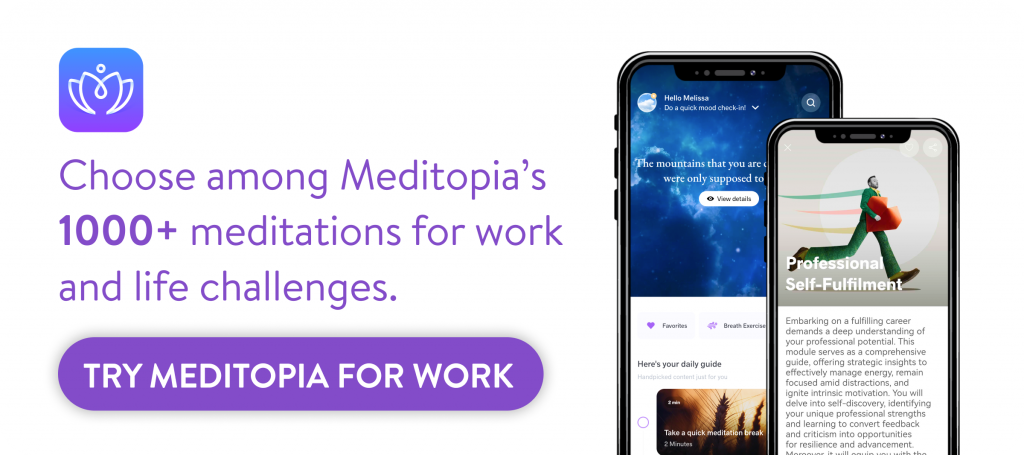Second-Hand Stress in the Workplace


Table of contents
Stress is so contagious, isn’t it? When one team member is stressed or anxious, everyone can notice it and quickly absorb the mood. Think of it as a house of cards; one trembling card could take the whole castle down. Keep reading to discover what second-hand stress at work is, how to manage it assertively, and how to prevent it
According to a Deloitte report conducted with 1,000 employed U.S. professionals, 64% of participants said they often feel stressed or frustrated at their job. Moreover, 91% of them reported that experiencing stress beyond their capacity negatively affects the quality of their work. Stress is one of the constants of the workplace because of its nature. However, it can be reduced to a more manageable level so that employees feel more motivated and engaged and work more productively.

Defining second-hand stress in the workplace
Let’s start with the basics: what defines stress?
We can understand stress as a basic reaction that involves our minds and bodies. Essentially speaking, stress is not “bad,” and it certainly doesn’t have to cause suffering. When we get stressed, our mind perceives a threat, and it tells our bodies that we need to move or do something in order to survive.

And, as you may be thinking, these threats can also be very common daily situations. Like traffic jams before an important presentation, tight deadlines, personal situations, work meetings, and so on. It’s all about how we perceive change, responsibility, time management, and self-confidence.
But here’s the great news: stress can, in fact, become a motivating force; it can drive us to take action. However, when it becomes constant, and there’s no time to rest and take care of ourselves, it can generate challenging consequences both in our personal and work life.
Understanding second-hand stress
Put yourself in the shoes of your employees for a moment. It’s one of those days where you feel like you can tackle any difficulty. But… When you get to the workplace, one of your coworkers looks agitated. And can’t stop talking about deadlines, mistakes made, meetings…
You’d probably try to move on with your day. After all, we have all been like that at some point, right? But the truth is, you’d probably begin to feel this second-hand stress in your thoughts, jaw, back, and performance. It’s like trying to focus with constant chatting in the background.
Second-hand stress occurs when we are exposed to someone’s experience of stress, whether it’s a behavior, a word, their body language, or even their sweat. A study from the Victoria University of Wellington in New Zealand found that smelling stressed people’s sweat may increase our brain region’s activity. The one responsible for regulating our emotional responses.

All those times you felt uncomfortable in a stressed team make sense now, right? But hey! We are to grow. Let’s talk about how you can prevent second-hand stress at your workplace.
Preventing second-hand stress
If stress is a biological response, can we train ourselves to handle it? Absolutely! It’s all about understanding what makes us feel that way and helping our brain know that it’s a transitory feeling, not a forever guest.
To do so, there are various employee wellness programs and stress management training programs designed to create an atmosphere where people can feel at ease while working.
And they have proven to be effective in transforming workplaces’ well-being and demonstrating that, to develop a happier team, we need to be more aware of ourselves and our influence on the people around us.
Stress management training
Stress management training works as a preventative measure. There is no one-size-fits-all approach to stress management training at the workplace. Many factors, such as the company’s culture, team size, goals, budget, and schedule, play a role in deciding which training will fit your team’s needs. That’s why the first step is to conduct a needs assessment and define your objectives. Then you can choose the stress management training that will work for your team and craft it accordingly.
Mindfulness is one of the most effective ways to reduce stress. Since the mind is programmed to be in constant motion, not thinking is actually a highly complex task for our brains. So instead of shutting down stressful or anxious thoughts, what you need to do is be more aware of them.

85-90% of these thoughts are negative. At work, they can say things like “it will never be enough,” “our work won’t be appreciated,” or “we don’t deserve that break yet.” Mindfulness-based programs offer ways to ease our thoughts and release the tension from our bodies. Since mindfulness can be applied to all aspects of our lives, it’s a sustainable coping approach.
The power of connection
One way to relieve chronic stress is to use the resources we find in our lives. Noticing them and their effects reduce the impacts of challenging physical and emotional states while increasing our flexibility and endurance, even when we have a stressful experience. One of those resources is social connection.

There are people, relationships, and communities that nourish us emotionally. Remembering them, and strengthening our bonds with them feeds us and increases our resilience. When it comes to the workplace, the team itself can become a source of joy and support rather than stress.
Remember, we are social beings, and we need to strengthen our bond through sharing meaningful experiences. You can plan regular gatherings every few months with your team outside of work, or you can frequently check in with them about their overall well-being. When facing challenging emotions such as stress, receiving attention and support is one of the most powerful resources.
